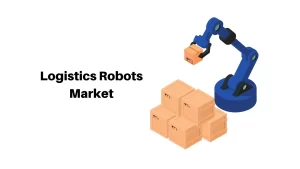Logistic robot advantages and disadvantages and What is the use of robotics in shipping logistics?
Logistic robots can handle various tasks within warehouses and distribution centers, streamlining operations. They can be programmed to pick and pack items for orders, reducing reliance on manual labor. Some robots can assist with loading and unloading trucks or other vehicles.
What are Logistic robots?
Logistic robots are autonomous drones used in warehouses and storage facilities to move goods around. They can be found in other settings, though warehouses are a primary application. These robots are part of a field called intralogistics, which is the automation of material handling within a facility. They can be used in farms or retail stores.
Types of Logistic Robots
- Automated guided vehicles (AGVs): These are mobile robots that follow predefined paths on the floor to move things around. They can be used to transport pallets, totes, or individual items.
- Robotic arms: These can be used to pick and sort items from bins or conveyor belts or assembly lines, and can be used to place items into storage or packaging.
Logistic robots offer several advantages over manual labor, including:
- Robots can work without getting tired, which can lead to significant productivity gains.
- Robots are very precise in their movements, which can help to reduce errors in order picking and fulfillment.
- Over time, the cost savings from increased efficiency and reduced errors can outweigh the initial investment in robots.
- Robots can take over some of the more dangerous tasks in warehouses, such as lifting heavy objects.
The overall goal of logistic robots is to automate what would otherwise be manual labor, increasing efficiency and productivity. They can keep things running around the clock and can improve the accuracy of inventory management.
What can Logistic robots do?
Logistic robots can handle various tasks within warehouses and similar facilities, They can improve warehouse and storage facility operations by automating several tasks. including:
- Transporting goods: Their primary function is to move items around the warehouse, fetching products from storage locations and delivering them to designated areas for packing, shipping, or further processing.
- Sorting and organizing: Some robots equipped with robotic arms can sort items from bins or shelves, categorizing them for storage or picking.
- Maintaining inventory: By keeping track of item movement, these robots can provide real-time data on inventory levels, helping with stock management and reducing the risk of stockouts.
Logistic robots streamline warehouse operations by automating manual tasks, leading to:
- Robots can move goods faster and more consistently than human workers.
- Automation reduces the risk of errors in picking and sorting items.
- While there’s an initial investment, robots can reduce the need for manual labor in the long run.
- Robots can function around the clock, unlike human workers who require breaks and rest.
Advantages of Logistic Robots
- Robots can work tirelessly, 24/7, completing tasks faster and more consistently than humans. This translates to a significant boost in warehouse throughput and order fulfillment speeds.
- Robots are programmed to follow precise instructions, minimizing errors in picking, packing, and inventory management. This reduces the risk of mistakes that can lead to delays and customer dissatisfaction.
- While there’s an initial investment, logistic robots can reduce reliance on manual labor in the long run. This can free up human workers for higher-level tasks like quality control or customer service. Robots can bring long-term cost savings by reducing labor needs and improving efficiency.
- Robots can handle hazardous materials or work in areas unsuitable for humans, minimizing workplace accidents and injuries.
- Some robots, like Autonomous Mobile Robots (AMRs), can adapt to changing warehouse layouts and can be reprogrammed for new tasks more easily than traditional AGVs.
Disadvantages of Logistic Robots
- The cost of purchasing and implementing logistic robots can be significant, especially for smaller businesses.
- Robots are most effective for repetitive tasks in controlled environments. They may struggle to adapt to unpredictable situations or handle delicate items.
- The increased use of robots may lead to job losses in the logistics sector. However, it can create new opportunities for workers with skills in robotics maintenance and programming.
- Logistic robots rely on complex software and hardware. System failures or malfunctions can disrupt operations and require skilled technicians to fix them.
- While robots can improve safety in some ways, proper safety protocols are still needed to ensure they operate safely around humans.
- Robots are typically designed for specific tasks and may not be adaptable to highly varied or non-routine situations.
You can subscribe to Science Online on YouTube from this link: Science Online
You can download Science Online application on Google Play from this link: Science Online Apps on Google Play
How to use Logistic robots and What types of robots are used in warehouses?
SCARA robot applications, What is a SCARA robot used for? and How many axis is a SCARA robot?
Serial Robots review, advantages, disadvantages and what can serial robots do?
Collaborative robot arm (cobot robots) applications, uses, advantages and disadvantages
Automation in manufacturing uses, advantages and disadvantages
Industrial robot (Auto industry) uses, advantages and disadvantages




